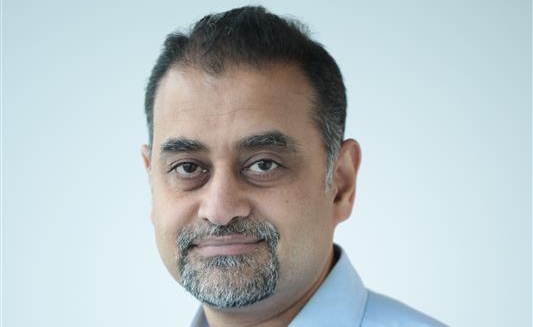The Future Is Now: AI Modernization Is Reshaping How Business Gets Done
- Written by Murthy Maddali, Managing Director – West Europe, Techwave

The present business environment imposes stronger requirements on Australian organizations to match the fast-paced digital-first economy requirements. Modern enterprises continue using outdated systems which often originated from decades past, thus causing operational slowdowns. The aging systems that seemed reliable and useful in past years have become unfit for the current business environment. Modernisation now goes beyond being a technological effort to serve as a fundamental business plan. New tool implementation represents only one aspect of modern business change. The drive focuses on creating new approaches to construct, integrate, and expand systems. The traditional data systems designed years ago lacked capabilities required for fast business adjustment, prompt customer interaction, and automated data management. Businesses insist on maintaining these outdated systems while being aware of their growing inadequacy.
Organizations operating in banking, transport, and public services sectors now recognize this truth. Due to modern technology advances, organizations are progressively working to exchange their old infrastructure with cloud-based solutions that scale. The process becomes faster because of artificial intelligence involvement. What once required extended code rewrites, long testing periods, and system downtime is now smarter and faster—without disrupting normal business activities. AI systems help organizations pursue exhaustive analysis of legacy systems to determine both important retention elements and necessary modifications, as well as system integration needs. Staff should locate essential business rules hidden within legacy code to reintegrate these vital components into modern advanced architectural designs. Business knowledge preservation through this method transforms into an organizational competitive advantage. Most Australian corporations maintain significant business value inside old technological frameworks. Processes which spent years or even decades in development show value when used as part of updated modern systems. The implementation of AI serves businesses by identifying important elements for migration to modern, fast, and safe technological frameworks.
Australian companies are under growing pressure to keep up with the demands of a fast-moving, digital-first economy. The systems many organisations still rely on—some of them built decades ago—are now slowing them down. These older platforms, while once considered robust and reliable, are simply no longer fit for today’s business environment. Modernisation has become less of a tech initiative and more of a core business strategy.
The shift isn’t just about adopting new tools. It’s about rethinking the foundation of how systems are built, integrated, and scaled. Most legacy setups weren’t designed to support rapid innovation, meet real-time customer expectations, or handle compliance in a data-driven world. And yet, many businesses continue to depend on them—knowing full well they’re falling behind.
Across industries, whether in banking, transport, or public services, this realisation is hitting home. Many organisations are now taking steps to replace outdated infrastructure with modern, scalable, cloud-based solutions. Artificial intelligence is accelerating that process. What once required massive code rewrites, long testing cycles, and system downtime can now be done faster and smarter—with less disruption to business operations.
With the help of AI, it’s possible to analyse old systems in detail—understanding what’s worth keeping, what needs to change, and how everything fits together. That includes identifying critical business logic buried deep in legacy code and reusing it in newer, more efficient architectures. This approach doesn’t just preserve business knowledge—it turns it into a competitive asset.
For many Australian organisations, there’s a lot of value locked inside these older platforms. Processes that have been refined over years, sometimes decades, can still play a vital role if brought into the modern world. AI is helping businesses do exactly that—extract what matters and move it into environments that are faster, safer, and built for the future.
Security and compliance have become key drivers in this transition. With increasing regulatory pressure—from APRA’s CPS 234 to Open Banking under the Consumer Data Right—businesses need tighter control over their systems. AI is helping here too. It’s being used to scan for vulnerabilities, run predictive tests, and make sure applications are resilient from the moment they go live.
Industrial development presents a different form today compared to its appearance from only several years ago. The first step uses AI discovery services to determine system connections and reveal risk locations and dependency variations. The next step for businesses requires moving to microservices-based architectures together with automation of their infrastructure along with deployment through modern tools including Kubernetes and Terraform. Any system operating under intelligent real-time monitoring becomes adaptable to handle changes in demand patterns after going online.
The benefits are real. Business organizations achieve project completion milestones at twice the original speed rate. Southwest Airlines enjoys lower costs because they make strategic decisions that optimize their infrastructure. The transition period involves very brief interruptions but results in improved system adaptability and enhanced security together with evolution capabilities. Organisations utilizing this advanced approach exceed their competition rather than merely matching them. Organisations that move to modern systems at this moment break free from the restrictions imposed by outdated technology. These platforms enable organisations to perform experiments and speed up their product launches while staying agile against market transformations. The organizations have prepared themselves to meet upcoming changes.
Current trends in technology advancement have pushed organizations to cease existing in a static condition. AI-driven modernization goes beyond system updates because it creates three essential benefits which include innovation with sustained growth alongside enhanced resilience. The essential transformation should be adopted by Australian businesses because it provides necessary survival tools to maintain their place in both competitive and regulated marketplaces.
“Modernization applies beyond merely swapping out old systems; it is grasping the essence of a business and shaping that into a system that’s ready for the future. At Techwave, we tackle every transformation with a tailored perspective, leveraging AI not just for automation, but to maintain what makes each organization special. Our mission is to provide valuable solutions to businesses, help them fully realize the value of their legacy while assuring the flexibility and insight needed to thrive in a digital-first world.”
— Murthy Maddali, Managing Director – West Europe, Techwave
Organisations can achieve new possibilities and maximum asset potential through their partnership with Techwave while developing intelligent systems that can adapt to the future. An appropriate strategy will lead businesses to capture the opportunities waiting in an impending future.







